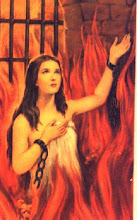The following is a list of elements that characterize Japanese Noh Theater.
· It is comprised of 3 sections, the actors, orchestra (hayashi) and chorus.
· The music is nonpulsatile and has its origins in Buddhist chant.
· There are only two types of instruments: an aerophone called a Nohkan and three distinct membranophones called the taiko (cylindrical drum), the o-tsuzumi (drum played on the lap), and the ko-tsuzumi (played resting on the shoulder).
· Each of the drums has a different timbre and each are used to (somewhat) simulate words.
· The most important drum is the ko-tsuzumi, which has a hollow timbre, but it can be varied by how tightly the drummer holds the strings on the side.
· The Nohkan has a reedy timbre and is played by overblowing.
· Since there is no rehearsal or beat to keep, each of the musicians must hear what the other is doing in order to keep the music going.
· Each of the drums plays a different pattern, but they are not played polyrhythmically.
· Noh music and acting is very stylized and minimalistic, what is commonly called Zen.
· Noh Choruses are always all male, with a soloist who begins a song with a cry and then extends it over the performance.
http://www.youtube.com/watch#playnext=1&playnext_from=TL&videos=oIqt_Rf9YuM&v=zUhtCLKFMx0
Monday, February 22, 2010
Subscribe to:
Post Comments (Atom)

No comments:
Post a Comment